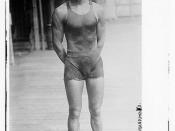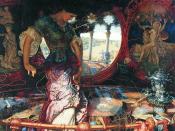Analysis of Robert Browning's My Last Duchess
Robert Browning's poem, My Last Duchess is a poem that represents and holds true to many of the Pre-Raphaelite ideals. It is comprised of rhyming pentameter lines. The lines do not make use of end-stops but rather they use enjambment (which is that sentences do not necessarily conclude at the end of the lines). This results in the rhymes not creating a sense of closure when the end of the lines come, but to a certain extent keep a subtle driving force behind the Duke's compulsive revelations. The Duke is quite a performer. In his speech he mimics other's voices, creates hypothetical situations, and uses the force of his own personality to make horrifying information seem merely colorful, even laughable.
The poem is based loosely on historical events which involve, Alfonso, the Duke of Ferrara, who lived in the 16th century. This is an important part of the poem because it is during the time of the Italian Renaissance, which to Browning as well as the Pre-Raphaelites, held a particular fascination for them.
This period of time represented to them the flowering of the aesthetic and the human, alongside, or in some cases in the place of, the religious and the moral. It is in this temporal setting that Browning is allowed to explore sex, violence, and aesthetics as all entangled, complicating and confusing each other. An example of this is Browning's use of such lush language which contradict the fact that the Duchess was actually punished for her natural sexuality. The Duke's ranting and ravings try to suggest that the "supposed" transgressions of the Duchess are only in his mind.
Many Victorians saw sin everywhere around them and a lot of the Pre-Raphaelite work deals with sin, especially the sin of...


